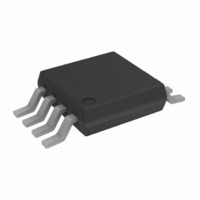AD8132ARMZ Analog Devices Inc, AD8132ARMZ Datasheet - Page 28

AD8132ARMZ
Manufacturer Part Number
AD8132ARMZ
Description
IC AMP DIFF LDIST LP 70MA 8MSOP
Manufacturer
Analog Devices Inc
Type
Differential Ampr
Datasheet
1.AD8132WARMZ-R7.pdf
(32 pages)
Specifications of AD8132ARMZ
Amplifier Type
Differential
Number Of Circuits
1
Output Type
Differential
Slew Rate
1200 V/µs
-3db Bandwidth
360MHz
Current - Input Bias
3µA
Voltage - Input Offset
1000µV
Current - Supply
12mA
Current - Output / Channel
70mA
Voltage - Supply, Single/dual (±)
2.7 V ~ 11 V, ±1.35 V ~ 5.5 V
Operating Temperature
-40°C ~ 125°C
Mounting Type
Surface Mount
Package / Case
8-MSOP, Micro8™, 8-uMAX, 8-uSOP,
Number Of Channels
1
Number Of Elements
1
Power Supply Requirement
Single/Dual
Common Mode Rejection Ratio
70dB
Voltage Gain Db
0.129dB
Input Resistance
3@5VMohm
Input Offset Voltage
3.5@5VmV
Input Bias Current
7@5VnA
Single Supply Voltage (typ)
3/5/9V
Dual Supply Voltage (typ)
±3/±5V
Power Supply Rejection Ratio
70dB
Power Dissipation
250mW
Rail/rail I/o Type
No
Single Supply Voltage (min)
2.7V
Single Supply Voltage (max)
11V
Dual Supply Voltage (min)
±1.35V
Dual Supply Voltage (max)
±5.5V
Operating Temp Range
-40C to 125C
Operating Temperature Classification
Automotive
Mounting
Surface Mount
Pin Count
8
Package Type
MSOP
No. Of Amplifiers
1
Gain Db Max
1.015dB
Bandwidth
350MHz
Supply Voltage Range
± 1.35V To ± 5.5V
Supply Current
10.7mA
Rohs Compliant
Yes
Lead Free Status / RoHS Status
Lead free / RoHS Compliant
Gain Bandwidth Product
-
Lead Free Status / Rohs Status
Compliant
Available stocks
Company
Part Number
Manufacturer
Quantity
Price
Part Number:
AD8132ARMZ
Manufacturer:
ADI/亚德诺
Quantity:
20 000
Company:
Part Number:
AD8132ARMZ-REEL
Manufacturer:
AD
Quantity:
2 501
Part Number:
AD8132ARMZ-REEL
Manufacturer:
ADI/亚德诺
Quantity:
20 000
Company:
Part Number:
AD8132ARMZ-REEL7
Manufacturer:
MAXIM
Quantity:
1 000
AD8132
The actual −3 dB frequency was measured to be 1.12 MHz, as
shown in Figure 78.
HIGH COMMON-MODE OUTPUT IMPEDANCE
AMPLIFIER
Changing the connection to V
mode from low impedance to high impedance. If V
set to a particular voltage, the AD8132 tries to force V
the same voltage with a relatively low output impedance. All the
previous analysis assumed that this output impedance is arbitrarily
low enough to drive the load condition in the circuit.
However, some applications benefit from high common-mode
output impedance. This is accomplished with the circuit shown
in Figure 79.
V
common-mode voltage. Thus, the common-mode output voltage
takes on the value that is set by the driven circuit. In this case,
it comes from the center point of the termination at the receive
end of a 10 meter length of Category 5 twisted pair cable.
Figure 79. High Common-Mode, Output Impedance, Differential Amplifier
OCM
–10
–20
–30
–40
–50
–60
–70
–80
–90
is driven by a resistor divider that measures the output
10
0
10k
Figure 78. Frequency Response of 1 MHz Low-Pass Filter
348Ω
348Ω
R
R
G
G
348Ω
348Ω
100k
R
R
F
F
FREQUENCY (Hz)
10Ω
10Ω
OCM
1M
(Pin 2) can change the common-
1kΩ
1kΩ
10M
OCM
49.9Ω
49.9Ω
is actively
OUT, cm
100M
to
Rev. I | Page 28 of 32
If the receive end common-mode voltage is set to ground, it is
well defined at the receive end. Any common-mode signal that
is picked up over the cable length due to noise appears at the
transmit end and must be absorbed by the transmitter. Thus, it is
important that the transmitter have adequate common-mode
output range to absorb the full amplitude of the common-mode
signal coupled onto the cable and therefore prevent clipping.
Another way to look at this is that the circuit performs what is
sometimes called a transformer action. One main difference is
that the AD8132 passes dc while transformers do not.
A transformer can also be easily configured to have either a high or
low common-mode output impedance. If the transformers center
tap is connected to a solid voltage reference, it sets the common-
mode voltage on the secondary side of the transformer. In this case,
if one of the differential outputs is grounded, the other output has
half of the differential output signal. This keeps the common-mode
voltage at ground, where it is required to be due to the center tap
connection. This is analogous to the AD8132 operating with a low
output impedance common mode (see Figure 80).
If the center tap of the secondary of a transformer is allowed to
float as shown in Figure 81 (or if there is no center tap), the
transformer has high common-mode output impedance. This
means that the common mode of the secondary is determined
by what it is connected to and not by anything to do with the
transformer itself.
If one of the differential ends of the transformer is grounded,
the other end swings with the full output voltage. This means
that the common mode of the output voltage is one-half of the
differential output voltage. However, this shows that the common
mode is not forced via low impedance to a given voltage. The
common-mode output voltage can be easily changed to any voltage
through its other output terminals.
The AD8132 can exhibit the same performance when one of
the outputs in Figure 79 is grounded. The other output swings
at the full differential output voltage. The common-mode signal
is measured by the voltage divider across the outputs and input
to V
frequencies, it is important to minimize the capacitance on
the V
performance. The voltage divider resistances can also be lowered
for better frequency response.
Figure 80. Transformer with Low Output Impedance Secondary Set at V
OCM
Figure 81. Transformer with High Output Impedance Secondary
OCM
. This, then, drives V
node; otherwise, phase shifts can compromise the
OUT, cm
V
OCM
NC
to the same level. At higher
V
V
DIFF
DIFF
OCM














